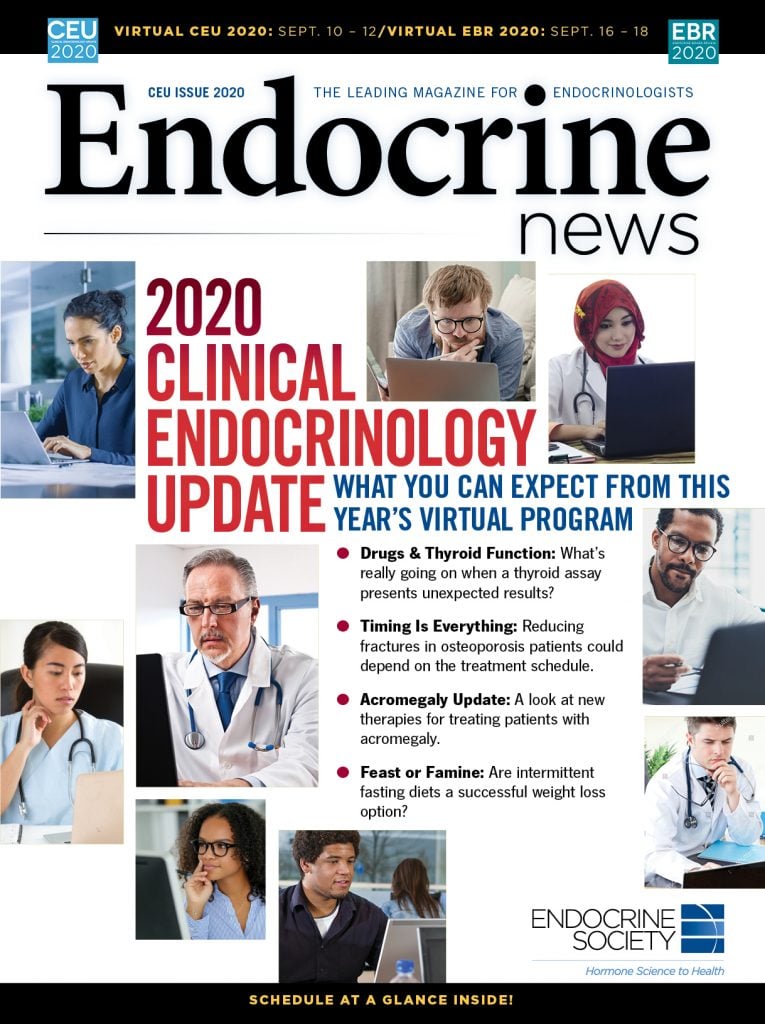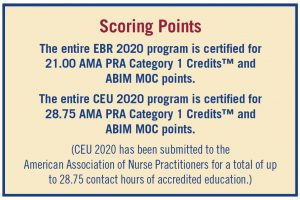
Michael Lewiecki, MD, will detail the importance of when to time treatments for patients with osteoporosis to reduce fractures, as well as the concepts of imminent fracture risk, treat-to-target, and sequence of therapy in his CEU session “Osteoporosis Medication: Timing Is Everything.”
Timing is everything.
That’s true about a lot of things in life – when farmers plant for the best harvest, when CEOs execute business plans for maximum impact and profit. A miscalculation can cause the assembly line to back up, the relay racer to stumble. And for patients with osteoporosis, mistiming treatment aspects can have disastrous results.
Worldwide, osteoporosis causes more than 8.9 million fractures annually, resulting in an osteoporotic fracture every 3 seconds. In the U.S., 10.2 million women and men over the age of 50 have osteoporosis and 43.4 million Americans over 50 have low bone mass and are at a higher risk of fracture. But endocrinologists are working to lower those numbers, and for some physicians it’s not just about treating the disease but the patient.
Michael Lewiecki, MD, director of the New Mexico Clinical Research & Osteoporosis Center and clinical assistant professor of Medicine at the University of New Mexico Health Sciences Center in Albuquerque is a renowned clinical endocrinologist and expert in treating osteoporosis. He is the past president of the International Society for Clinical Densitometry (ISCD) and a board member of the ISCD and the National Osteoporosis Foundation. Lewiecki is the founding president of the Osteoporosis Foundation of New Mexico and program director of its flagship activity, the annual Santa Fe Bone Symposium. He is founder and Director of Bone Health TeleECHO (Extension for Community Healthcare Outcomes), an ongoing telementoring program for healthcare professionals focusing on osteoporosis and metabolic bone diseases.
This year’s Clinical Endocrinology Update (CEU) will be virtual, beamed into the homes and offices of anyone interested in the latest breakthroughs in treating endocrine patients. Lewiecki will bring his expertise and experience to his CEU presentation, “Osteoporosis Medication: Timing Is Everything.” “I will focus on the concepts of imminent fracture risk, treat-to-target, sequence of therapy, and timing of starting treatment and transitioning treatments to reduce fracture risk,” Lewiecki says.
Avoiding Worst-Case Scenarios
For a patient at a high risk of fracture, any treatment is of course better than no treatment. But Lewiecki says that some treatments may be better than others, and some treatments may be more effective when given in a specific order. For example, he says, for patients at a very high risk of fracture, it is usually preferable to initiate treatment with an anabolic agent followed by an antiresorptive drug, rather than the reverse order.
“When you start treatment, what medication you choose, and how you manage the timing of transitions from one medication to another may have important clinical consequences for your patient.” – E. Michael Lewiecki, MD, director, New Mexico Clinical Research & Osteoporosis Center; clinical assistant professor of Medicine, University of New Mexico Health Sciences Center, Albuquerque, N.M.
Lewiecki explains just what can go wrong should things not be carefully considered. “Probably the worst scenarios are treatment with an anabolic agent without follow-up treatment with an antiresorptive drug and discontinuation of denosumab without follow-up with another antiresorptive drug,” Lewiecki says. “In both situations there will be loss of benefit of initial therapy and a subsequent increase in fracture risk.”
And avoiding these worst-case scenarios is what Lewiecki hopes to raise awareness of during his talk. According to Lewiecki, a fracture due to osteoporosis is a bone attack that requires immediate and urgent medical attention. But that means beginning with a measured, thoughtful plan. Timing could literally mean that difference between life and death – everything. “When you start treatment, what medication you choose, and how you manage the timing of transitions from one medication to another may have important clinical consequences for your patient,” he says.
Patient-Based Decisions

“Decision aids, such as written handouts and videos are often helpful,” Lewiecki says. “Models of osteoporotic and healthy bone are especially useful in helping patients understand the structural degradation of bone that occurs with osteoporosis and the differences between anabolic and antiresorptive medications.”
“Probably the worst scenarios are treatment with an anabolic agent without follow-up treatment with an antiresorptive drug and discontinuation of denosumab without follow-up with another antiresorptive drug. In both situations there will be loss of benefit of initial therapy and a subsequent increase in fracture risk.”– E. Michael Lewiecki, MD, director, New Mexico Clinical Research & Osteoporosis Center; clinical assistant professor of Medicine, University of New Mexico Health Sciences Center, Albuquerque, N.M.
Once patients understand more about their treatment options, they become crucial in deciding the next steps. Lewiecki points out that it’s also good to keep in mind that most patients in clinical practice would probably not qualify for participation in the clinical trials used to approve the medications physicians use to treat them. “We treat the patient, not the disease,” Lewiecki says. “Treatment decisions should consider all available clinical information, including patient preference.”
Lewiecki’s 30-minute “Osteoporosis Medication: Timing Is Everything” discussion will be presented online as an on-demand session beginning Sept. 10. “The new and emerging concepts I will discuss are highly relevant for anyone caring for patients with osteoporosis,” he says.
-Bagley is the senior editor of Endocrine News. He wrote the July cover story on how telemedicine and telehealth have gained popularity with both patients and healthcare providers during the COVID-19 pandemic.

